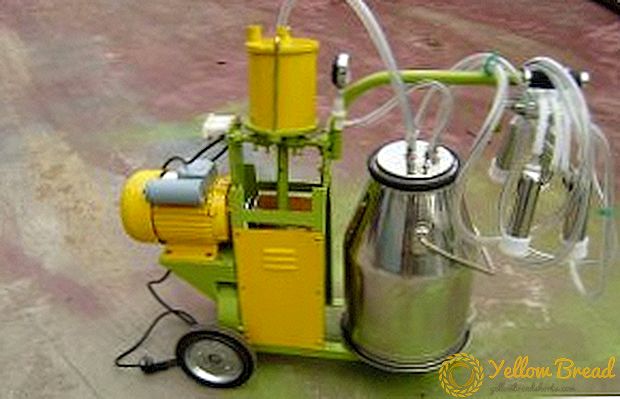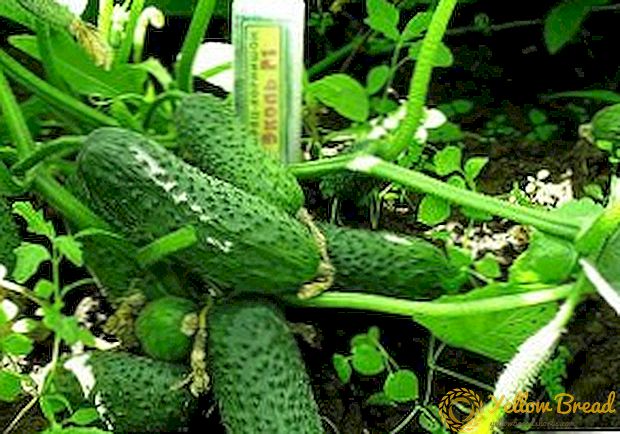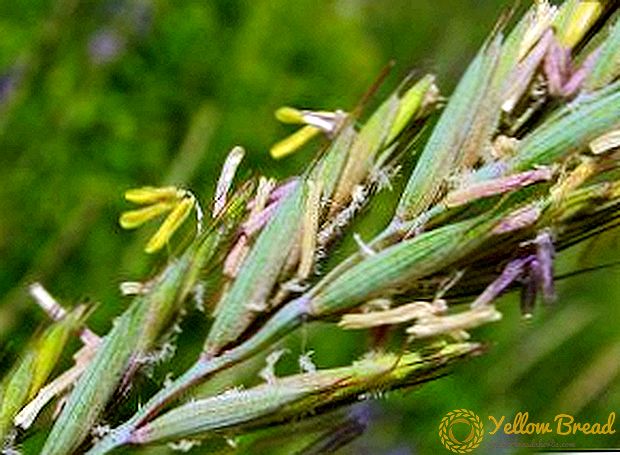 It is difficult to imagine a summer cottage without planted flowers. Frequent guests on a flower bed - violets. This article will talk about their special form - a horned violet of many years: you will learn how to plant it, water it and how to create optimal conditions for abundant flowering and good growth.
It is difficult to imagine a summer cottage without planted flowers. Frequent guests on a flower bed - violets. This article will talk about their special form - a horned violet of many years: you will learn how to plant it, water it and how to create optimal conditions for abundant flowering and good growth.
- Botanical description
- Popular varieties
- Conditions for growing horned violets
- Lighting and location
- Preferred soil
- How to grow a violet (planting)
- From seed
- Vegetative reproduction
- How to care for a plant in the garden
- Watering
- Top dressing
- Pruning
- Wintering violets
- Diseases and difficulties in growing
Botanical description
Let's see, by what external signs can you recognize this variety.
Plant height reaches 25 cm, the leaves are elongated, oval, richly green shade.
Flowers of various shades - white, blue, blue, purple, their diameter is 3-5 cm, in the middle of each inflorescence there is a “eye” of yellow color. The coloring depends on the grade chosen by you. The main feature that gave the name to this variety is an unusual shape bud: its back is bent inward, which resembles a horn.This plant of the violet family blooms all summer, so competent care for it will allow you to enjoy bright flowers for a long period.

Popular varieties
There are a lot of varieties of violet horned, each of them has its own shade of flowers. There are 10 varieties that are popular with gardeners:
- Atona. The flowers of this variety have a yellow or cream color.
- "White perfection". This variety has flowers of white color, inside of each there is a yellow neat speck.
- "Bot Blue" (Boughton Blue). By the name of this variety, it becomes clear that the flowers will be blue.
- Victoria Cowthorne. The flowers are purple-lilac.
- Gazelle. The flowers of this variety can be of two shades - rich purple and blue-white shades.
- Jersey Gem. Blooms lilac flowers.
- "Yellow perfection." The flowers of this variety have a juicy yellow color.
- "Lavender ice" (Lavender Ice). The flowers of this variety are characterized by a purple-blue color, the top of the petals of a pale blue hue.
- "Sorbet Wai-T-Ti" (Sorbet YTT). This variety can please a very original flowering, bright blue flowers bloom first, then blue flowers and white flowers bloom at the end of their bloom.
- "Charlotte" (Charlotte). Flowers dark purple hue.

Conditions for growing horned violets
Such a variety of varieties of violet horned perennial implies certain conditions for growing its dacha plot. There are important requirements of this plant that are mandatory: lighting and space, as well as soil
Lighting and location
Violet shows good growth and abundant bloom in sunny areas, but direct and prolonged exposure to sunlight should be avoided. A scattered shade is suitable, for example, from tree branches or higher plants in a flower bed.
Preferred soil
Properly selected soil - a pledge of abundant flowering. The soil should be loamy, well drained. The recommended acidity is 6.5-7.2. The soil should be wet, but the main thing - to avoid the accumulation of water.You can use a substrate prepared from humus and loamy soil type. To maintain the desired level of moisture the soil is mulched. Slivers, tree bark, gravel, moss are suitable for this process. 
How to grow a violet (planting)
Next, you will learn about vegetative propagation of plants, and how to grow violet from seeds.
From seed
Violet seed reproduction makes it more resistant to disease. Experienced gardeners and breeders practice the following way of growing these plants from seeds: using peat tablets, which is immersed in water so that they are nourished by it. It is better to use warm water. Then seeds are placed in each tablet, a small amount of soil is poured on top. If you plan to grow a flower on the windowsill, the peat tablets are laid out in containers, and on top of them cover with plastic wrap.
If there are no peat tablets on hand, there is a second method of planting seeds. Seeds collected in August, planted in the same month. Seeds are poured into the prepared beds, then the soil with them is moistened and sprinkled on top of a thin layer of earth.It is important not to miss the moment of the dive of the young shoots of the plant - as soon as 3 leaves appear, the flower is planted. The distance between the shoots should be at least 20 cm.
Vegetative reproduction
This method of reproduction includes plant cutting. This is the most common method of growing violets. In order for the grafting process to be successful, the following recommendations should be followed:
- Responsibly choose a place for planting and prepare the soil - wet and loosen;
- choose the right cuttings for planting - these should be green shoots growing from above. On the shoot should be at least 2 leaves;
- cut cuttings are planted in prepared beds to a depth of 1.5-2 cm;
- You can cover the top with a damp cloth - this will help the cuttings to take root faster;
- compulsory daily care - watering (spraying) and cleaning of weeds.

How to care for a plant in the garden
After you planted violet, special care is not required.
Watering
Despite the fact that the flower likes to grow in moist soil, the main rule is not to overdo it with watering. Excessive water flooding of the plant leads to rotting of the root system. Spraying the foliage in the morning and in the evening and moderate watering of the soil - this is the perfect combination for good growth of your violets in the garden.

Top dressing
Frequent feeding is not required. It is enough twice a year, during the period of leaf growth and after flowering, to apply complex mineral or organic fertilizers. Allowed to alternate fertilizer plants with irrigation. It is impossible to use fresh manure for fertilizer - it is absolutely not suitable for the plant and causes its death.
Pruning
Pruning regrown shoots stimulates plant growth. If you regularly inspect a flower bed, you should remove faded flowers, dried leaves.
Wintering violets
Winter violet horned tolerates well. But there is one caveat when preparing flowers for wintering - hybrid plants should be covered for the winter. Pine needles and dry leaves will hide well from frost. Varietal plants to hide in the winter is not required.

Diseases and difficulties in growing
The following diseases can be dangerous for a plant - gray rot and blackleg. They can be prevented by ensuring proper care, namely, timely watering. If you have noticed traces of damage on plants, then spraying with a solution of soda and soap or sprinkling with small sulfur can help them.
Having decided to grow violets, you will not encounter any special difficulties along the way. This plant is unpretentious, care for horned violet is simple, growing from seed and early grafting will allow you to admire the flowers already this year.






